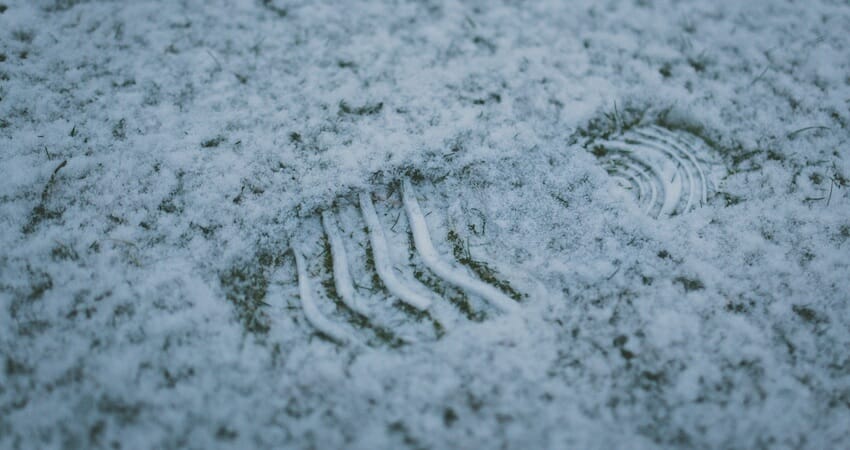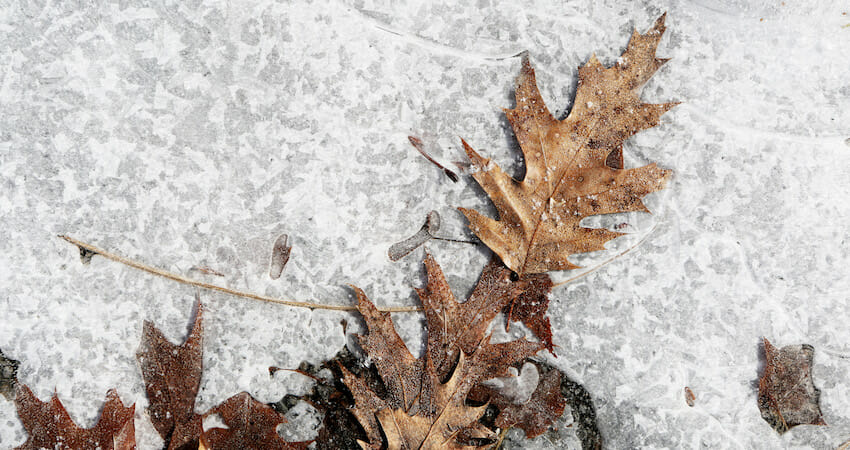If you live in Michigan, it may be no surprise to you that recent winter forecasts are calling for heavy rain and snow. Long-term Michigan homeowners know that this is to be expected for any North American winter months. However, many homeowners in the area are still unaware or unprepared for the cold weather and how it will affect their home’s foundation. Whether your home is older or brand new, it is important to understand how cold weather and freezing temperatures can affect your house and your foundation.
By failing to check your foundation before freezing temperatures occur, you could be risking increased foundation damage.
If you have a cracked foundation, you could be subject to a number of winter weather issues that are detrimental to your foundation. Heavy snow and ice combined with freezing temperatures can increase the severity of your foundation’s problem. For instance, small cracks can easily become larger cracks, allowing melted snow and ice to enter your foundation. This can lead to mold, rot, foundation damage and structural repair. By failing to check your foundation before freezing temperatures occur, you could be risking increased foundation damage.
READ MORE: What Does Foundation Repair Look Like?
Foundation damage can occur regardless of whether your foundation is covered in soil or exposed above ground. It is expected that exposed, above ground foundations would endure the harshest treatments that winter weather has to offer, but below ground foundations can suffer just as much damage due to melting snow and ice runoff and freezing soil. Water can easily turn to ice beneath the soil’s surface. This is what is known as frost heave.
Frost Heave and Your Foundation
Frost heave occurs when the soil surrounding your foundation freezes at low temperature. The resulting freeze causes an upward swelling and expansion of soil, which can be detrimental to your home’s foundation. When your foundation is first installed for your home, it is essentially a hole filled with concrete. This makes for a solid foundation, because the concrete that is poured in directly fits against the edges of the surrounding soil. However, when the temperatures drops to below freezing, frost heave can occur.
READ More: Has Winter’s Harsh Weather Damaged Your Retaining Wall?
Frost heave causes the soil to become harder and expand around your foundation. The resulting effect is that the frozen soil tightens its grip on your foundation. As the soil becomes frozen deeper and deeper, expanding and becoming harder, the soil can move, disturb, or even lift your foundation out of it’s “hole”. The farther down the soil will freeze, the more your foundation will lift. The soil will typically not freeze all the way down to the bottom of your foundation. This can not only create plenty of structural problems, but causes loose soil and moisture to make its way underneath the gap of your foundation. You may not even see the long term damage of this process until the weather warms up and the frozen soil melts. When that happens, your foundation will settle back down, but now it has loose soil and water trapped underneath the base. It will not settle properly. Frost heave can crack paved roads, create damaging potholes, and wreak havoc on your foundation.
(image source: Wikipedia)
Early Warning Signs of Winter Weather Foundation Problems
You can even look for evidence of this yourself by looking for signs of ice lensing or needle ice. This can be an early indicator of frost heave for your home. As temperatures continue to drop, look for areas of frozen soil around your foundation. If you look closely, you may see some long, vertical ice fibers form within the top layer of soil. This natural phenomena is caused by moisture in the soil being wicked up from the lower layers, causing ice small ice fibers to grow. These ice fibers are constantly supplied by wicked moisture, causing thick freezing and extended growth.
The expansive ice growth can create tremendous problems and open up layers in your soil, causing foundation shift and damage. If fact, ice lensing can cause over 10% of soil expansion. Some ice needles can grow up to 4 inches. The weight of the soil above the freezing can push back on the upward growth, creating a “lens” shape of ice beneath the soil. This causes uneven lifting of the soil, with a bowed growth towards the middle of the frost heave. This force is so strong that one or more ice lenses can significantly lift the surrounding soil by as much as 1 foot or more. Ice lensing does not only occur on the surface. It can occur on many layers of the soil. If the frost works its way down through the layers of soil, many layers of ice lensing can build upon each other, causing even more problems for your foundation and the surrounding soil. Ice lensing is typically found at the center point between the top frozen layer of soil and the transition layer, made of frozen and premelted water. Water diffusion works its way up to the growing ice layer, creating the “wick” of the ice. Ice lensing is just one other cause that can add to the problem of frost heaving.
READ MORE: Causes of Foundation Problems
Winter Weather and West Michigan Homes

West Michigan lakefront homes are especially susceptible to ice lensing and frost heaving. Soils that are surrounded by moisture or are fine-grained have a tendency to be heavily affected by frost heaving. Silty and loamy soil types are also highly susceptible to frost heaving. Lack of sunlight and colder temperatures are also a factor for quick freezing with West Michigan lakefront homes. If your foundation is already cracked or damaged, this can escalate the problem even further. Water and moisture have a way of finding the small cracks in your foundation and will settle there. When temperatures drop below freezing, the water will quickly expand with no place to go. Frost heave is such a powerful force that a hairline crack in your foundation can quickly become a destructive foundation problem and a financial nightmare.
So how can you prepare and what should you look for? For starters, during the winter months, try not to get water on or near your concrete. Washing your car may not be the best idea, because it will add more water and moisture to your concrete, which could find its way into cracks and freeze. You can search the perimeter of your house and foundation, looking for any cracks ahead of time. Try to address these small signs early. You can even check for caulking and sealing around porches and driveways to ensure that no moisture will make its way inside. Concrete is naturally porous, so although moisture cannot completely be avoided, measures can be taken to reduce the amount of water that it absorbs. Also be sure to check your gutters and downspouts. Make sure that your downspouts are pointed in the correct direction to ensure accurate water flow away from your house, and check that your gutters are clear of any debris. Finally, when the winter storm does come, be sure to clear away any ice or snow immediately. If you let ice and snow melt near your foundation, it will quickly find itself in holes, and cracks and crevices, waiting to freeze and expand.
Frost heave is such a powerful force that a hairline crack in your foundation can quickly become a destructive foundation problem and a financial nightmare.
As stated earlier in this article, some of the effects of frost heaving may not be noticed until the early spring after the winter weather has disappeared. When the weather warms up, check around your foundation for any signs of displacement or movement. You can also look around your patio, driveway, and garage to see if the concrete has shifted away from the base of your home. You can try to preemptively suppress frost heave from occurring, but if you find that your foundation has suffered the effects of frost heaving, you should have it repaired and corrected as soon as possible.



